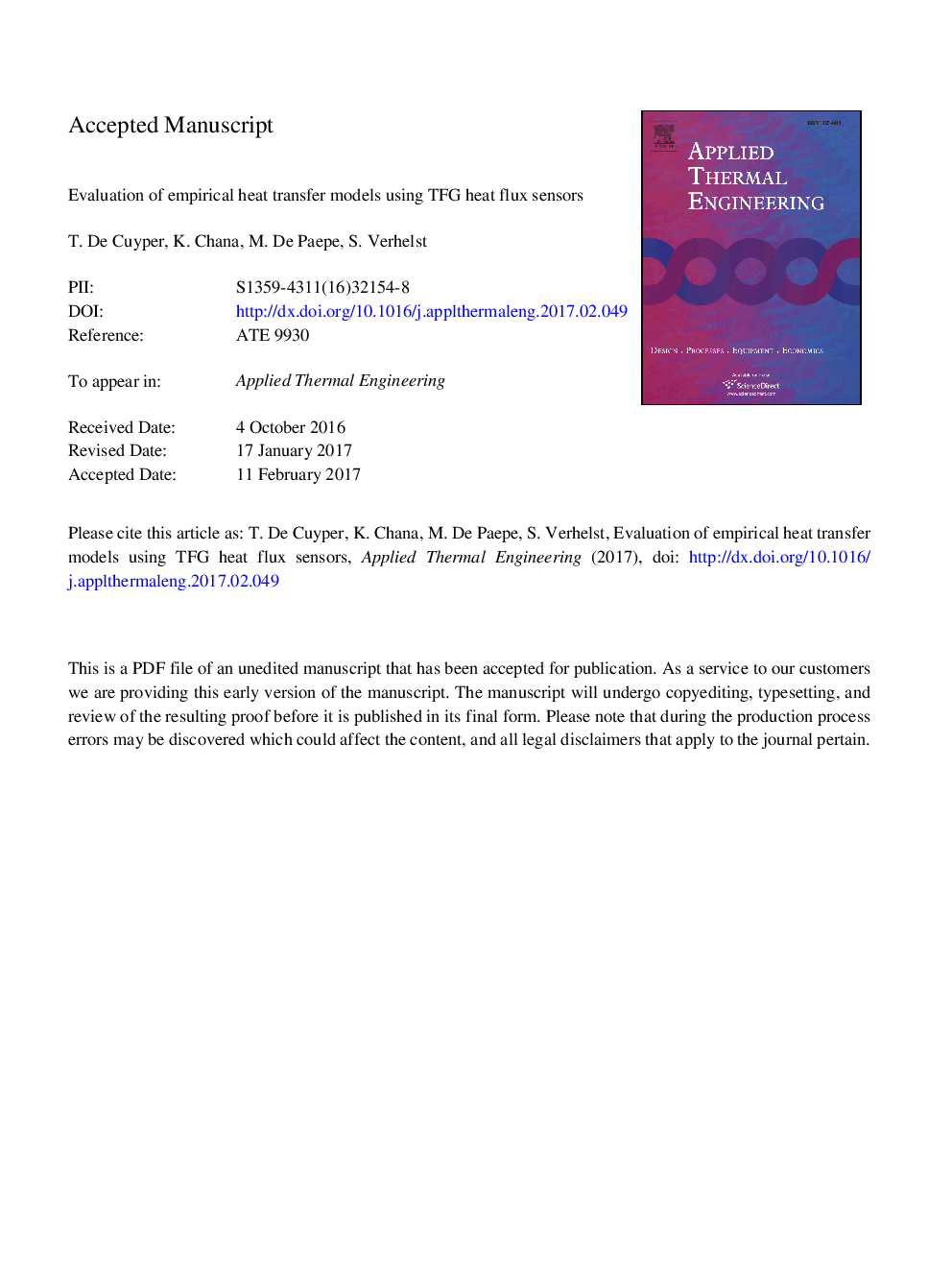| کد مقاله | کد نشریه | سال انتشار | مقاله انگلیسی | نسخه تمام متن |
|---|---|---|---|---|
| 4991386 | 1457111 | 2017 | 22 صفحه PDF | دانلود رایگان |
عنوان انگلیسی مقاله ISI
Evaluation of empirical heat transfer models using TFG heat flux sensors
دانلود مقاله + سفارش ترجمه
دانلود مقاله ISI انگلیسی
رایگان برای ایرانیان
کلمات کلیدی
موضوعات مرتبط
مهندسی و علوم پایه
مهندسی شیمی
جریان سیال و فرایندهای انتقال
پیش نمایش صفحه اول مقاله

چکیده انگلیسی
Thermodynamic engine cycle models are used to support the development of the internal combustion engine (ICE) in a cost and time effective manner. The sub model which describes the in-cylinder heat transfer from the working gases to the combustion chamber walls plays an important role in the accuracy of these simulation tools. The heat transfer affects the power output, engine efficiency and emissions of the engine. The most common heat transfer models in engine research are the models of Annand and Woschni. These models provide an instantaneous spatial averaged heat flux. In this research, prototype thin film gauge (TFG) heat flux sensors are used to capture the transient in-cylinder heat flux behavior within a production spark ignition (SI) engine as they are small, robust and able to capture the highly transient temperature swings. An inlet valve and two different zones of the cylinder head are instrumented with multiple TFG sensors. The heat flux traces are used to calculate the convection coefficient which includes all information of the convective heat transfer phenomena inside the combustion chamber. The implementation of TFG sensors inside the combustion chamber and the signal processing technique are discussed. The heat transfer measurements are used to analyze the spatial variation in heat flux under motored and fired operation. Spatial variation in peak heat flux was observed even under motored operation. Under fired operation the observed spatial variation is mainly driven by the flame propagation. Next, the paper evaluates the models of Annand and Woschni. These models fail to predict the total heat loss even with calibration of the models coefficients using a reference motored operating condition. The effect of engine speed and inlet pressure is analyzed under motored operation after calibration of the models. The models are able to predict the trend in peak heat flux value for a varying engine speed and inlet pressure. Next, the accuracy of the models are tested for a fired operating condition. The calibrated coefficient using a motored operating conditions are inadequate to predict the heat loss under a fired operating condition.
ناشر
Database: Elsevier - ScienceDirect (ساینس دایرکت)
Journal: Applied Thermal Engineering - Volume 118, 25 May 2017, Pages 561-569
Journal: Applied Thermal Engineering - Volume 118, 25 May 2017, Pages 561-569
نویسندگان
T. De Cuyper, S. Broekaert, K. Chana, M. De Paepe, S. Verhelst,